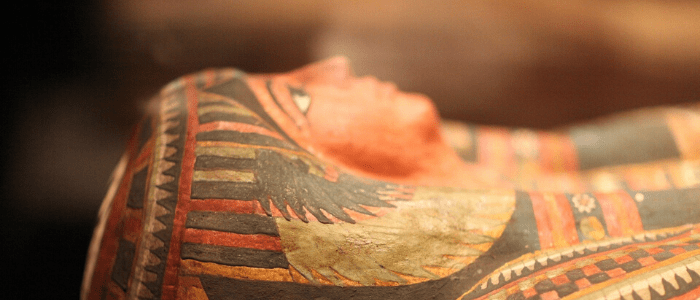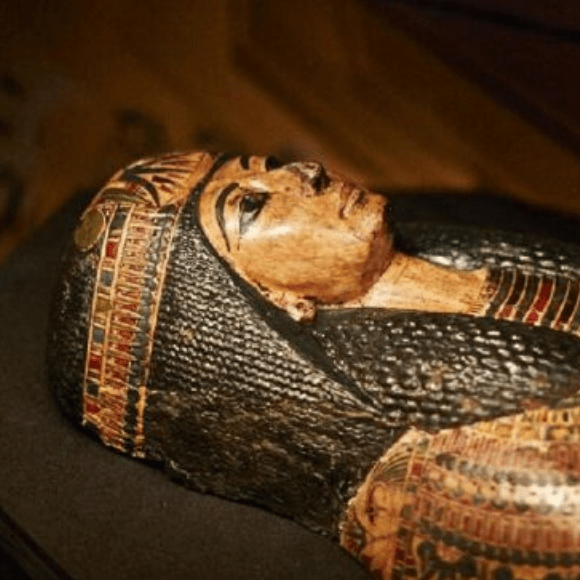The mummy’s secrets unraveled: novel paleoproteomic approach reveals insight into the Egyptian mummification process

Researchers have utilized a new non-invasive paleoproteomic approach to extract ancient proteins from a 4000-year-old Egyptian mummy. The findings suggest the technique could be used to analyze samples from other ancient artifacts without compromising specimen integrity.
Scientists have successfully extracted ancient collagen and keratin samples from the body of a young woman who resided in Upper Egypt more than 4000 years ago. The work – published recently in the Journal of Archaeological Science – also sheds light on some of the materials used during the mummification process.
The team employed a novel technique in which a small ethylene-vinyl-acetate (EVA) membrane with embedded chromatographic resins is placed in contact with the specimen’s surface. Proteins extracted utilizing this method were subsequently analyzed using liquid chromatography-mass spectrometry.
The mummy was discovered in the 1920s and has since been stored at the Museum of Anthropology and Ethnography of the University of Turin (MAET; Italy), where the study was conducted. The team had access to detached skin samples for this pilot study; however, they stress there is no need to disturb mummies from their current resting places as EVA sampling can take place in situ.
Analysis revealed the presence of Pinaceae resin on the mummy’s skin and on the layers of material used to wrap the body, a vital observation as there has previously been a scarcity of information available regarding the mummification process of the first dynasties of the Old Kingdom of Egypt.
 The mummy returns: Egyptian priest Nesyamun ‘speaks’ for the first time in 3000 years
The mummy returns: Egyptian priest Nesyamun ‘speaks’ for the first time in 3000 years
Utilizing the latest in 3D printing technology, modern-day researchers have allowed the dead to speak for themselves by recreating the vocal cords of the long deceased.
The samples obtained also provided a snapshot of the microbiome present on the surface of the mummy’s skin, unshrouding potential biodeteriogens, which could have vital implications for future conservation efforts.
The discovery of biodeteriogens with the ability to degrade oils present in preserving agents could also have future “green technology” applications. Additional studies are required to unwrap previously uncharacterized bacteria that can break down plastics and hydrocarbons.
The team has a variety of other projects utilizing EVA underway, including screening the original manuscripts of Count Vlad Tzepesh – the inspiration behind Dracula – as well as exploring the paintings of Leonardo da Vinci. A major project that they hope to instigate soon is an analysis of navigation logs from slave trade ships.
The authors explained: “The Dutch were among the major slave traders and they have a vast collection of these historical records. We believe we can detect which pathologies they carried onboard and transmitted into America and possibly that we could find seeds and pollens of plants that were carried accidentally on board and thus appeared in the New World.”
The focus will also return to mummies, the EVA technique will be used to sample MAET’s entire collection in the hope of exhuming important information on both the lives and deaths of the Ancient Egyptians.